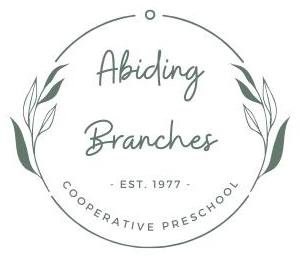Is your child ready for Kindergarten?
Curriculum
ABC Preschool is committed to teaching your child in a way that he or she will benefit the most. Our curriculum is modeled after the Minnesota Department of Education's Early Learning Standards. Our teachers write the lesson plans to give each child the opportunity to achieve success in knowledge and skills in six domains to reflect the full range of child development. Those domains are: Social and Emotional Development, Approaches to Learning, Language and Literacy Development, Creativity and the Arts, Cognitive Development and Physical Development. We like to include your child's interests whenever possible in our planning. We use developmentally appropriate practice in our teaching. Developmentally appropriate practice (DAP) means teaching young children in ways that....
*Meet children were they are, as individuals and as a group
*Support each child in attaining challenging and achievable goals that contribute to his or her ongoing development and learning.
DIFFERENCES BETWEEN "PRESCHOOL" AND "PRE-K" AT ABC PRESCHOOL
We are often asked "what are the differences between ABC's preschool and pre-kindergarten classes?" Aside from the obvious differences of the age of the students, tuition and the length of class time, there are many other subtle differences between the two types of classes we offer.
AGE
Pre-K: 4 & 5 year olds.
Preschool: 3 & 4 year olds
CLASS LENGTH:
Pre-K: 3 hours/day, 3 days a week or 6 hours/day, 3 days a week
Preschool: 2 1/2 hours/day, 2 or 3 days/week
READING CURRICULUM
Pre-K: Most children in Pre-K already know most of the alphabet, so we work more on the sounds letters make and how to sound out words. We also do a little memorization of sight words. We read longer stories to the class at story time and ask more complex questions about the story.
Preschool: Many children in Preschool do not know all of the alphabet letters so we work on identifying letters and the sounds they make. We read shorter stories at story time and ask more general questions about the story.
WRITING CURRICULUM
Pre-K: The children practice writing their first and last names and numbers. They also have journals that they "write" and draw pictures in at least weekly. Some children dictate what they want the page to say, others write the sounds they hear in the words they want to write, still others write out entire sentences! The children are encouraged to write their own stories to share with the class.
Preschool: The children practice writing their first names and some numbers. If children are ready to write more, we incorporate that into the preschool day.
MATH CURRICULUM
Pre-K: Many pre-k students already identify numerals 0-9, so we work on counting and identifying numerals at least to 30, often to 100. The children work on copying and/or creating 2- and 3-step patterns. We work on adding and subtracting with concrete objects and with numerals. We practice writing numerals.
Preschool: We expose the children to numerals to 30 or higher, but we want them to learn the numerals 0-9. They copy and/or create 1- and 2-step patterns. We work on adding and subtracting with concrete objects.
LARGE GROUP TIME
Pre-K: The children are comfortable sitting for 20 minutes (or longer) for group time, taking turns, raising their hands, and having group discussions.
Preschool: The children are comfortable sitting for 10-15 minutes for group time. They are learning to take turns, raise their hands and listen to each other.
BEHAVIORAL EXPECTATIONS
Pre-K: We expect all children in the class to participate in class activities, to play with at least one other child, to feel comfortable in the group setting with children and adults. We work on things like sharing, communicating properly, standing up for him/herself, being a leader, and self-help skills.
Preschool: We expect some children to do what is listed in the Pre-K expectations, but we expect many children in preschool to have to work on that ALL YEAR!
There are other differences, but also many similarities between the two types of classes. Some children who are 4 to 4 1/2 do better in the preschool class and some do better in the pre-k class. If your child has attended preschool before, his or her teacher would be able to give you a good idea which would be a good fit for him or her.


